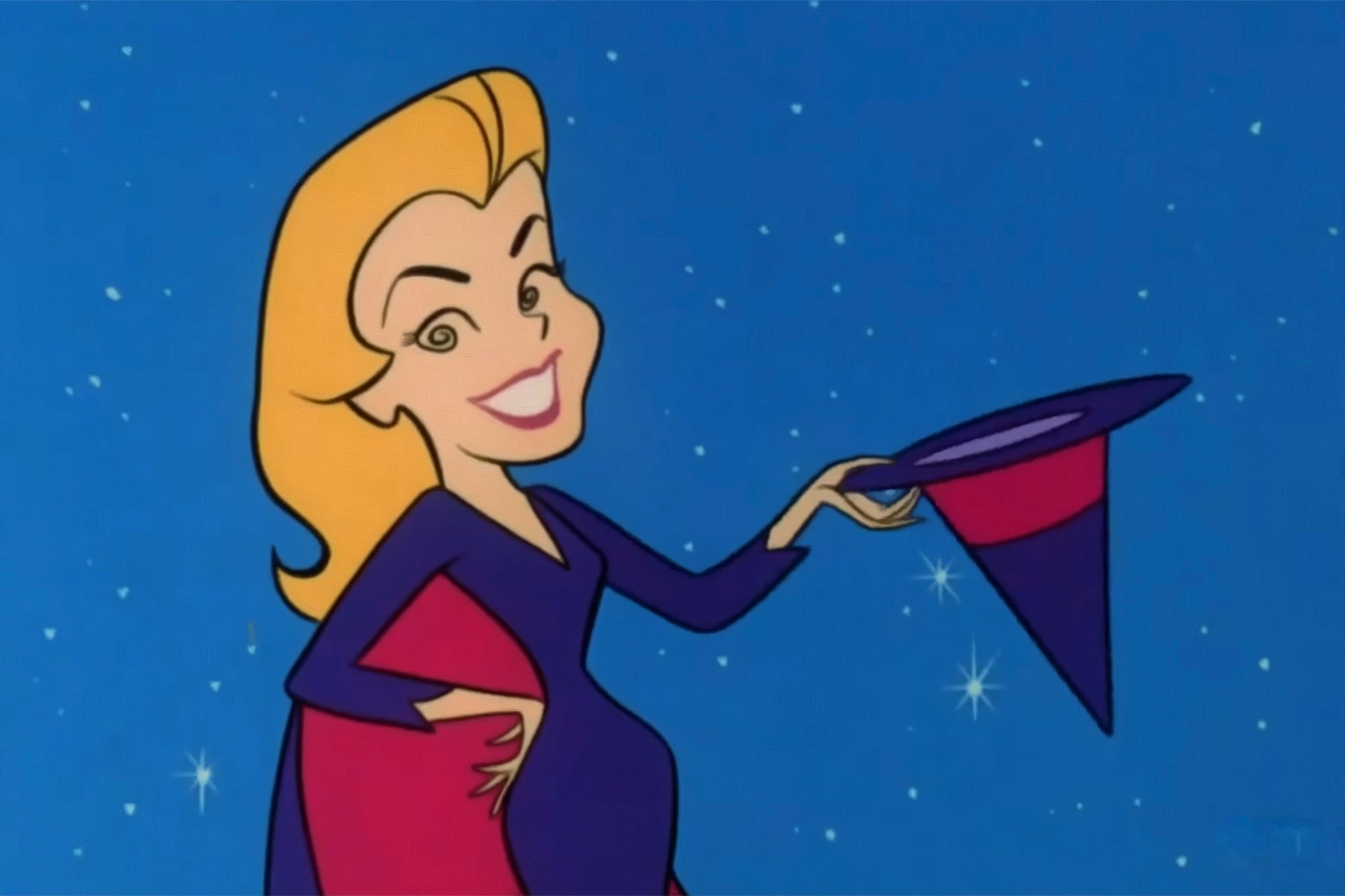WitchTok: How witchcraft became the latest controversial wellness fad
From ‘spiritual mentors’ charging £1,500 for a tarot reading to gurus who claim to dabble in the occult, witches have gone mainstream in the Goop-sphere. But real witches are claiming it makes a mockery of their beliefs, writes Olivia Petter


Your support helps us to tell the story
From reproductive rights to climate change to Big Tech, The Independent is on the ground when the story is developing. Whether it's investigating the financials of Elon Musk's pro-Trump PAC or producing our latest documentary, 'The A Word', which shines a light on the American women fighting for reproductive rights, we know how important it is to parse out the facts from the messaging.
At such a critical moment in US history, we need reporters on the ground. Your donation allows us to keep sending journalists to speak to both sides of the story.
The Independent is trusted by Americans across the entire political spectrum. And unlike many other quality news outlets, we choose not to lock Americans out of our reporting and analysis with paywalls. We believe quality journalism should be available to everyone, paid for by those who can afford it.
Your support makes all the difference.In 2024, it’s officially cool to be a witch. It only took several centuries. If that’s a sentiment that causes you to raise your eyebrows – or question my sanity – you clearly haven’t been spending enough time online. Today, witchcraft is everywhere on social media, but particularly Instagram and TikTok.
From the spiritual gurus promising to change your life by way of crystals and spells, to the actual self-identifying witches who genuinely purport to practise in the occult – and can teach you how to do so as well – there is a litany of spellbinding stuff around right now. But engaging in some of it could set you back several months of your salary.
Well, that’s if you seek out the witch du jour, Kate Tomas, a 43-year-old “professional witch” and “spiritual mentor” whose clients include Lena Dunham and the Will & Grace star Megan Mullally. She also happens to be going out with Andrew Garfield, which might also be why her name rings a bell. Tomas works with people in myriad ways but mostly conducts readings involving tarot cards. These sessions last 45 minutes and cost – wait for it – £1,500. The price also includes two days of conversations on WhatsApp to further discuss the reading, and is usually followed by a six-month minimum “spiritual mentorship” contract for £4,000 per month. “Magic takes time,” Tomas told The Sunday Times in a recent interview. “It can’t happen overnight.”
No, it can’t. But does it really have to cost about as much as a secondhand car? The suggestion that it does has provoked criticism, and a suggestion that witchcraft is just the latest component of spirituality to have been co-opted by the wellness industry.
Tomas is far from the only practitioner capitalising on her gift, either. There are endless spiritual healers scattered across the country promising to change your life with some sort of witchy practice, whether it be via tarot readings and moon rituals or spell ceremonies and shamans. There is psychic-to-the-stars Fleur Leussink, who is based in Lisbon and charges $700 (£586) for a 45-minute reading – she also has a five-year waitlist. Then there’s Princess Diana’s go-to medium Sally Morgan, who tours the country giving readings to the masses.
Elsewhere, there’s the internet subculture known as WitchTok, in which people (and usually young women) talk passionately about spells, rituals and the basics of magic. In one clip, a woman runs down some of the apparent signs that a person is “a natural witch”. They include “feeling like an outsider most of your life”, “having a strong intuition” and having animals be “drawn to you”. Well, if she’s right then I’m probably a witch, too.
The rise of platforms like TikTok and Instagram played a significant role in making witchcraft more visible and accessible. This is a positive development. However, it’s crucial to approach these practices with respect and awareness of their origins and meanings
One quick deep dive into all this, though, suggests that the word “witch” – while trendy – is being used a little flippantly online. Is Tomas a witch purely because she says that she is? Or because she can read tarot cards? And does that give her the ability to charge thousands of pounds for her services? Am I a witch because I feel like an outsider and cats like me? Could I also be charging people thousands of pounds to chat to me about their lives? Am I missing out on a business opportunity here?
“Witchcraft has definitely been co-opted by the wellness sector,” says Michael Cardenas, head witch at Olde Ways, an internet hub for mystical information, magical services and apothecary goods. “It is actually having an incredibly negative cultural impact on witchcraft practices, watering them down and ‘normalising’ them to the point that the term ‘witch’ has started to lose its meaning.” Cardenas offers various services to clients, ranging from clairvoyance and tarot readings to medium sessions and spellwork consultations.
A witch today, he explains, “is someone who is actually taking an empowered approach to life by tapping into the cycles of nature (moon, sun, seasons, planets), aware of their ability to manifest their needs by using magic, someone with heightened psychic abilities, and who aligns themselves with gods, spirits and ancestral veneration practices”. Of course, this is a definition that varies depending on who you ask. “Personally, I feel that my witch energy is very much connected to my spirituality and my feminist beliefs,” says Semra Haksever, who calls herself an “eclectic witch”.
“So I bring together different practices and elements across the crafts and find inspiration in many ancient traditions.”
What being a witch is not, Cardenas says, is merely going on a “glorified meditation retreat with juicing, journaling, and intention-setting on a gentrified island somewhere”. Nonetheless, if you search through WitchTok long enough, you’ll find representations of this exact thing rather quickly. The majority of them will also be trying to sell you something. “You do not need anything to be a witch,” says Gabriela Herstik, an author and witch based in Los Angeles. “You do not need $1,000 readings or a $75 crystal. Witchcraft is a way of living in and working with your power, but it has been co-opted by being commodified as a cure-all. Breathwork, meditation, movement, affirmations, working with the cycles of the sun and moon… this costs nothing.”

Part of this conflation – and the rising interest in witchcraft – could be down to the wider wellness boom more generally. For the better part of the last decade, there has been a surging interest in the pursuit of living well, whether that be through trends such as “clean eating”, which has since fallen drastically out of fashion, or by adopting trendy new ketogenic diets and overloading yourself with supplements and superfoods. “This phenomenon highlights a growing interest in holistic and alternative approaches to health and wellbeing,” says Emma Griffin, author of The Witch’s Way Home, a beginner’s guide to modern witchcraft.
For many, this interest began percolating during the pandemic. “During the lockdown, people began exploring new ways to reconnect with their true selves and manifest their desires,” adds Griffin. “The rise of platforms like TikTok and Instagram played a significant role in this surge, making witchcraft more visible and accessible. This is a positive development, as it provides a wealth of resources for learning and inspiration that were not available before the internet. However, it’s crucial to approach these practices with respect and awareness of their origins and meanings.”
Of course, few contemporary practices carry the centuries-old, misogyny-laden history of witchcraft. According to English Heritage, somewhere between 30,000 and 60,000 people were executed during the era of witchcraft persecution, which began in the 15th century and carried on until the 18th century. In England, the majority of those accused of witchcraft were women; it’s not hard to see how this has been weaponised both in popular culture and wider society ever since.

The most famous cultural example might be Shakespeare’s weird sisters in Macbeth, who are described as hideous “midnight hags”. Then there’s the Wicked Witch of the West in The Wizard of Oz. More recently, these stereotypes have been modernised and subverted through cult shows such as Buffy the Vampire Slayer and Charmed. But “witch” is still a word used to oppress, belittle and diminish women; Hillary Clinton, Nancy Pelosi and Theresa May have all been labelled as such.
“It has been great to see there is an increasing awareness of the history and misogyny after years of only seeing witches depicted as evil women who put curses on people,” says Haksever. “I think that most people who are drawn to the witch archetype have experienced some kind of persecution in their life. I hope that with increasing interest that the true history of the witch is better known, which I really do believe would help women’s rights and equality and what we are facing right now.”
Still, growing awareness isn’t exactly dismantling the misogyny that society attaches to witches and anything related to them. This brings me back to Tomas, who was forced to remove a “seduction masterclass” from her website because of, as she explained on her podcast, “horrific accusations that were levelled at me that I’d used magic to seduce my partner”. An article has since been published clarifying that “Andrew Garfield’s Girlfriend Swears She Didn’t Cast a Spell on Him”.
This mentality, Griffin believes, could be rooted in the past. “There is a concept known as the ‘witch wound’, a collective trauma believed to be inherited from the historical persecution of witches,” she explains. “This idea suggests that many people carry an unconscious fear and judgement towards witchcraft, stemming from the violence and oppression of the past. Healing this ‘witch wound’ involves overcoming these deep-seated fears and judgements, and fostering a more open and accepting view of witchcraft today.”
Ultimately, while things are definitely changing, and people are becoming more open-minded to the idea of witchcraft and what it may entail, clearly we have a way to go if we’re to really grapple with what it is, to what extent it can (and should) be commodified, and how we perceive those who practise it. “In essence, while the perception of witches is changing, there remains a need for greater understanding and acceptance,” adds Griffin. “By educating ourselves and challenging media portrayals, we can continue to heal the historical wounds and appreciate the diverse practices and beliefs within modern witchcraft.”